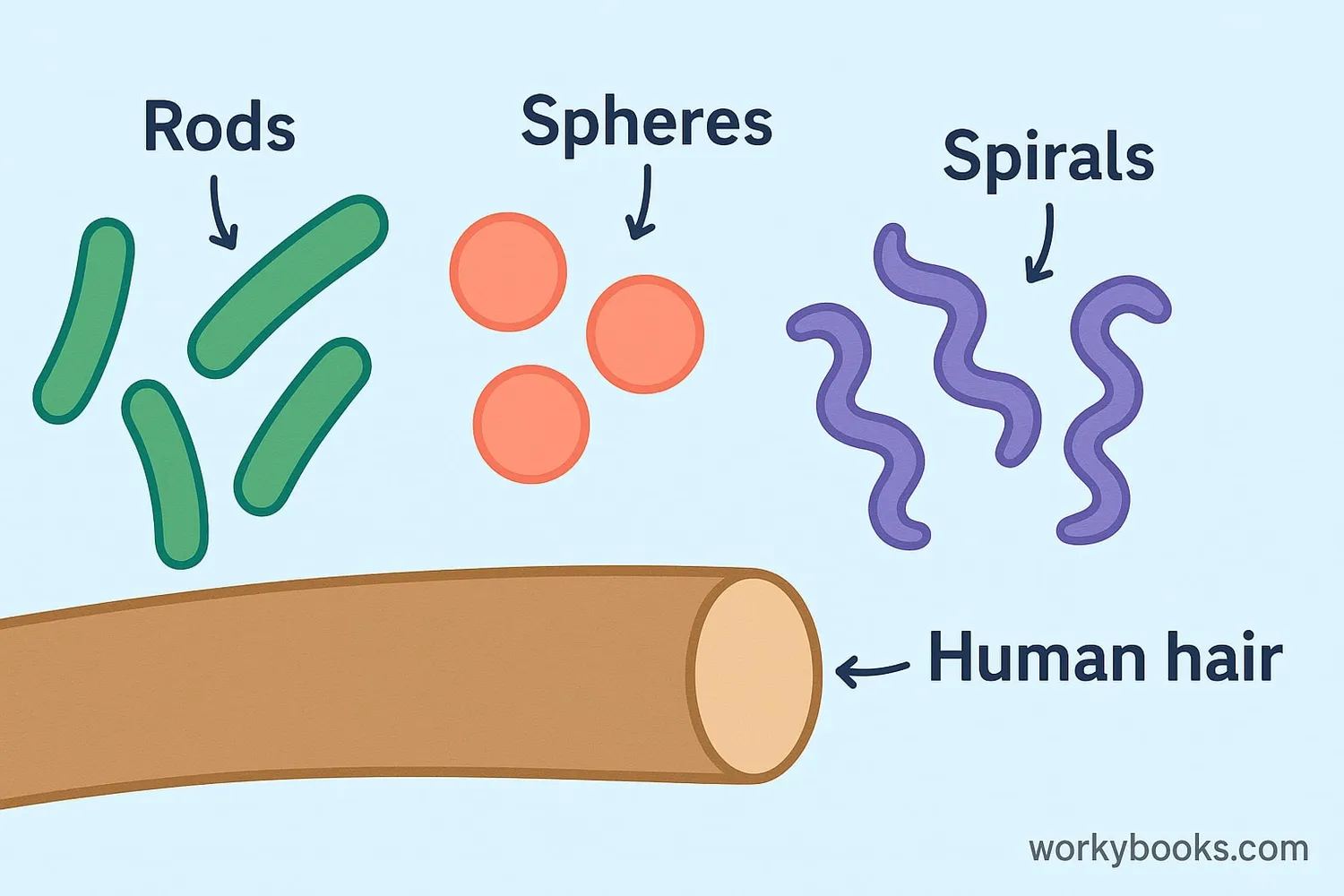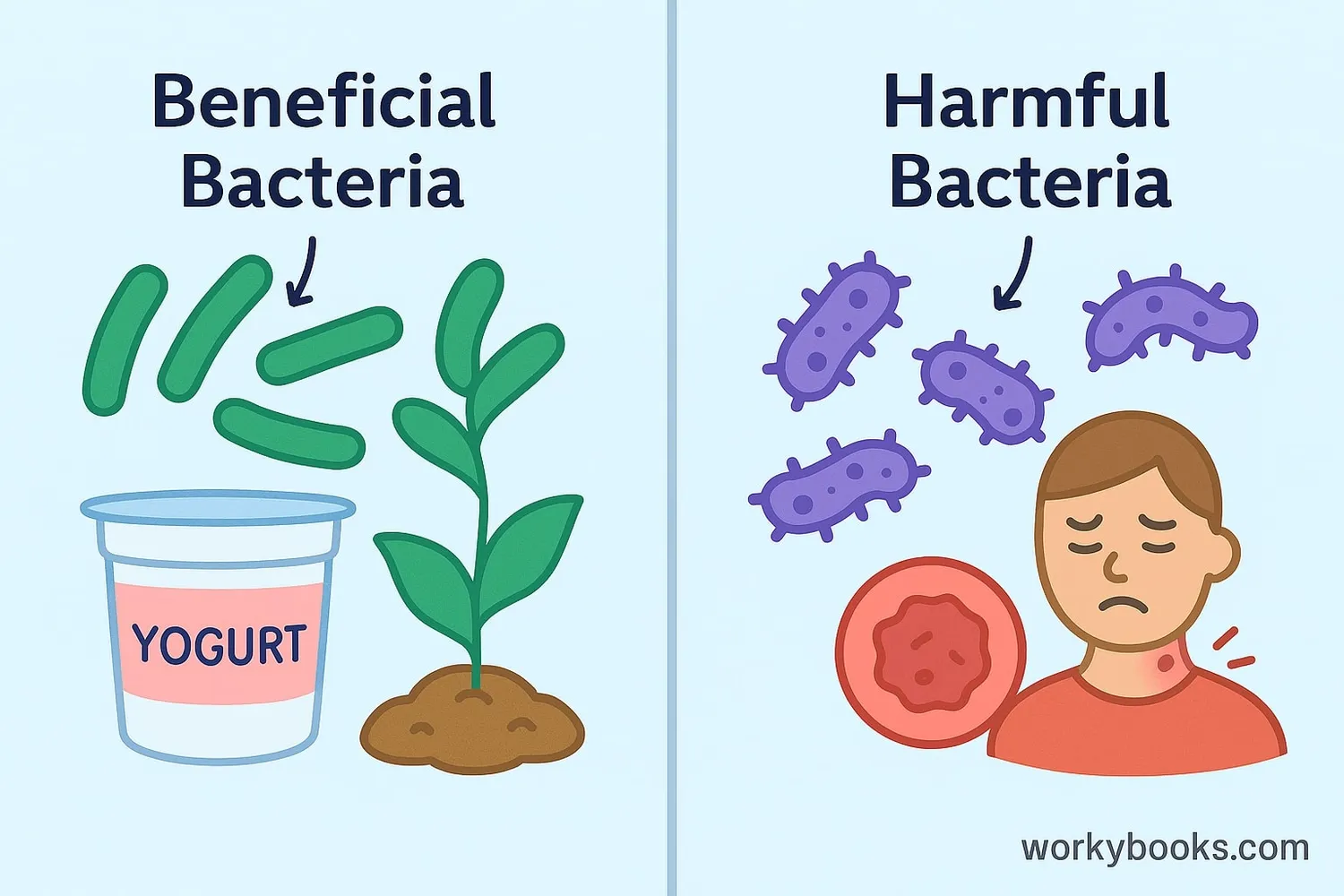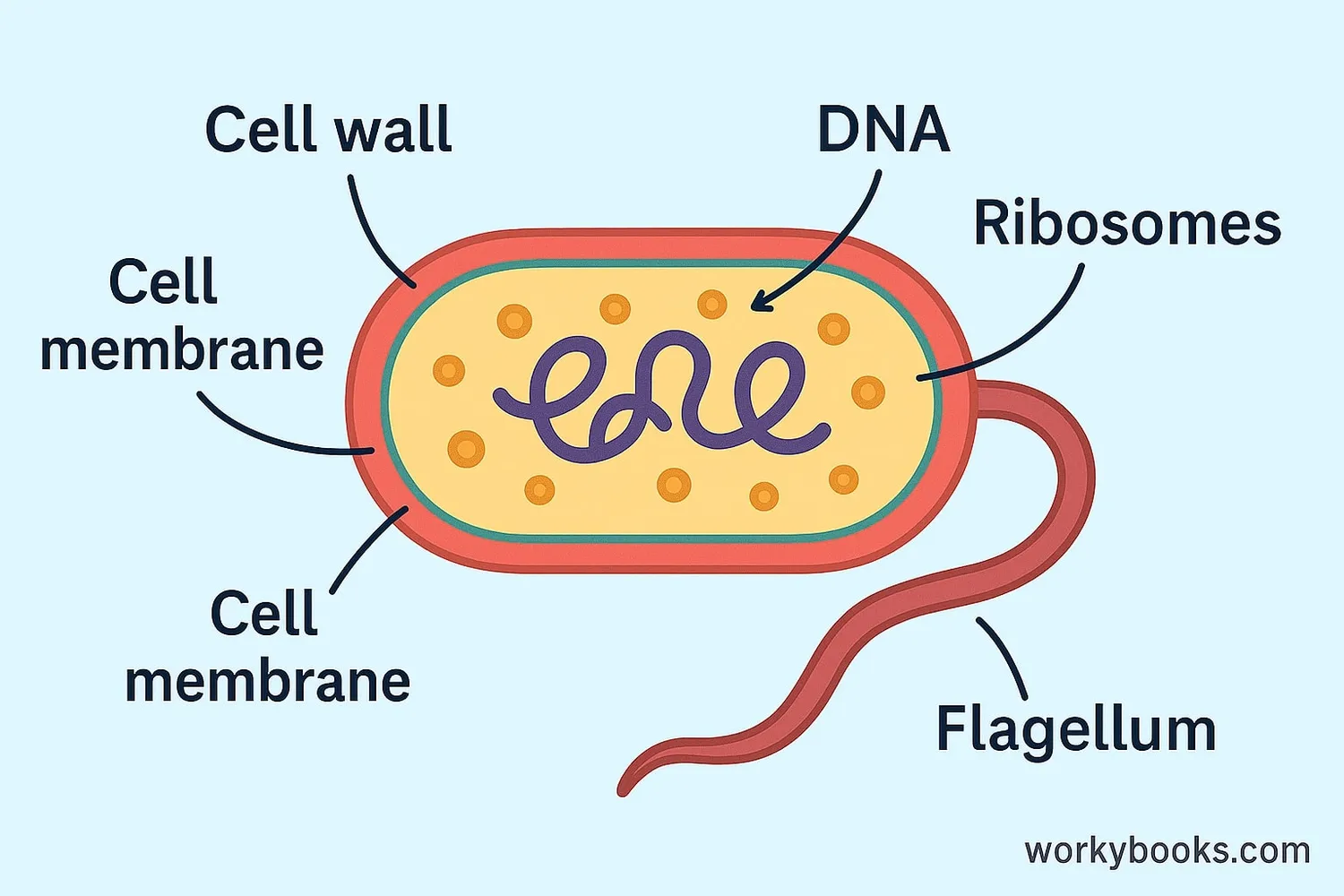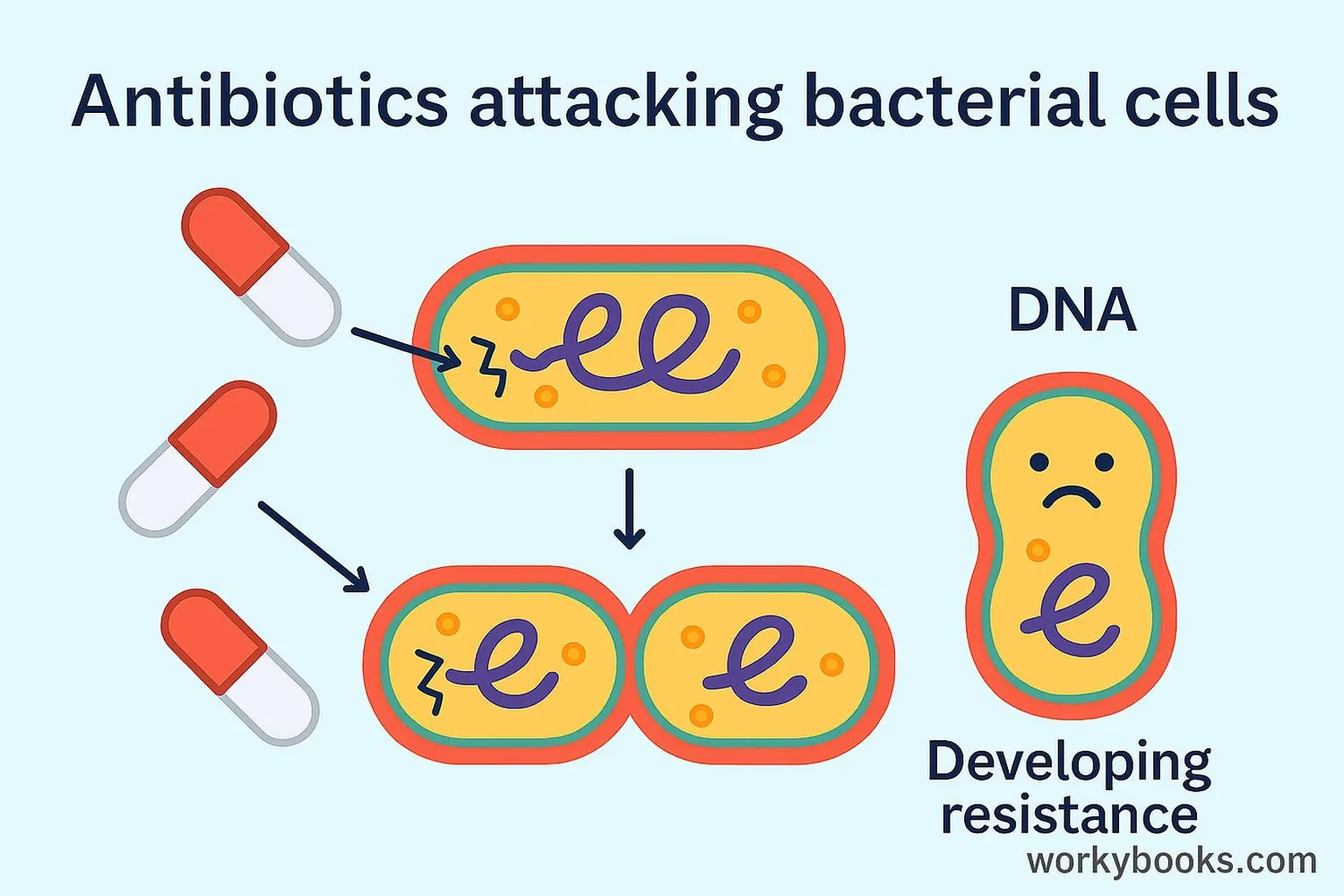Bacteria - Definition, Examples, Quiz, FAQ, Trivia
Discover the amazing world of bacteria - the tiny organisms that live everywhere!
What Are Bacteria?

Bacteria are tiny living organisms called microorganisms that are all around us! They're so small that you need a microscope to see them. Bacteria are a type of prokaryote, which means their cells don't have a nucleus like our cells do.
Bacteria are everywhere - in the air, water, soil, and even inside our bodies! Some bacteria can make us sick, but many are helpful and necessary for life on Earth. In fact, your body contains more bacterial cells than human cells!
Did You Know?
There are about 40 million bacterial cells in a single gram of soil! That's more than 5 times the human population of Earth!
Types of Bacteria

Bacteria come in many types, and we can group them based on whether they help or harm us:
Beneficial Bacteria
Help with digestion, make vitamins, protect us from harmful bacteria, and help decompose waste
Harmful Bacteria
Can cause infections and diseases like strep throat, food poisoning, and pneumonia
Industrial Bacteria
Used to make yogurt, cheese, medicines, and even clean up environmental spills
Your gut microbiome contains trillions of bacteria that help digest food, produce vitamins, and protect you from harmful bacteria. Eating healthy foods like yogurt and fiber helps keep these good bacteria happy!
Bacterial Structure

Even though bacteria are simple organisms, they have special parts that help them survive:
Cell Wall
A protective outer layer that gives the bacteria its shape
Cell Membrane
Controls what enters and leaves the cell
Cytoplasm
Gel-like substance where chemical reactions happen
DNA
Contains genetic instructions for the bacteria
Flagella
Whip-like tails that help some bacteria move
Scientists use a staining technique called the Gram stain to classify bacteria into Gram-positive (thick cell wall) and Gram-negative (thin cell wall with an extra membrane). This helps doctors choose the right antibiotics to treat bacterial infections.
Bacterial Growth and Reproduction

Bacteria can grow and multiply very quickly when conditions are right. They need food, water, and the right temperature to grow. Some bacteria can divide every 20 minutes!
Bacteria reproduce through a process called binary fission, where one cell splits into two identical cells. This is a type of asexual reproduction.
Rapid Multiplication
If one bacterium divided every 20 minutes, in just 7 hours, it could produce over 2 million bacteria! Thankfully, resources usually run out before this happens.
To prevent the spread of harmful bacteria, we use sterilization techniques like heating, using chemicals, or radiation to kill bacteria on surfaces and in medical equipment.
Antibiotics and Resistance

Antibiotics are medicines that kill bacteria or stop them from growing. They're used to treat bacterial infections but don't work against viruses.
When antibiotics are overused or not taken properly, some bacteria can survive and develop antibiotic resistance. This means the antibiotics no longer work against these bacteria, making infections harder to treat.
Take as Prescribed
Always finish all antibiotics, even if you feel better
Don't Share
Never share antibiotics with others
Prevent Infections
Wash hands regularly to reduce need for antibiotics
Scientists are always working to develop new antibiotics to fight resistant bacteria. Meanwhile, we can all help prevent antibiotic resistance by using these medicines responsibly.
Bacteria Quiz
Test your knowledge about bacteria with this quiz! Answer all 5 questions to see how much you've learned.
Frequently Asked Questions
Here are answers to some common questions about bacteria:
Fun Bacteria Facts
Discover some amazing facts about bacteria!
Tiny but Mighty
Bacteria are so small that 1000 could line up across the head of a pin! Yet collectively, bacteria on Earth weigh more than all plants and animals combined.
Ancient Life
Bacteria were among the first life forms on Earth, appearing about 3.5 billion years ago. They helped create oxygen in our atmosphere, making life possible for other organisms.
Human Bacteria
Your body contains about 39 trillion bacterial cells and only 30 trillion human cells! There are thousands of different bacterial species living on and inside you.
Extreme Survivors
Some bacteria can survive in extreme environments - in boiling hot springs, deep in the ocean, in radioactive waste, and even in the frozen Antarctic!


